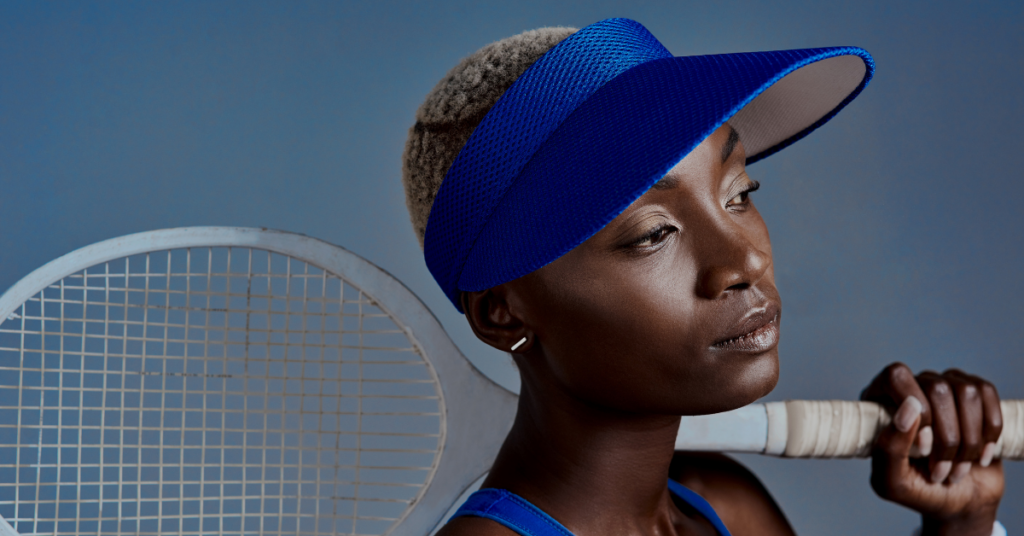Introduction
Technology has revolutionized the world of sports, providing athletes with advanced tools and gadgets to enhance their performance, monitor their health, and improve their training routines.
From wearable devices to virtual reality simulations, athletes now have access to a wide range of technological innovations that can take their game to the next level. In this article, we will explore the various technology and gadgets available to athletes and how they can positively impact their performance and overall well-being.
Wearable Technology
Wearable technology has become increasingly popular among athletes, allowing them to monitor their fitness levels, track their progress, and gather valuable data for performance analysis. Here are some notable examples:
- Tracking devices and smartwatches: These devices can track metrics such as heart rate, steps taken, calories burned, and sleep patterns. They provide real-time feedback and can help athletes monitor their training intensity and recovery.
- Fitness bands and activity trackers: Similar to smartwatches, fitness bands and activity trackers offer features like step counting, distance tracking, and heart rate monitoring. They are often more lightweight and streamlined, making them ideal for sports-specific activities.
- GPS and location tracking devices: GPS devices allow athletes to track their routes, pace, and distance during outdoor activities such as running, cycling, or hiking. They provide accurate data for performance analysis and can help athletes optimize their training.
Sports Performance Analysis
Technology has revolutionized the way sports performance is analyzed, providing athletes and coaches with valuable insights into their techniques and strategies. Some key technologies in this area include:
- Sports analytics and data tracking: Advanced analytics platforms can analyze vast amounts of data collected during training sessions and competitions. Athletes and coaches can gain valuable insights into their performance, identify strengths and weaknesses, and make data-driven decisions.
- Video analysis and performance feedback: High-speed cameras and video analysis software enable athletes to review their performances, analyze technique, and receive feedback from coaches. This visual feedback helps identify areas for improvement and refine skills.
- Biomechanics and motion tracking: Motion tracking systems and wearable sensors can capture and analyze an athlete’s movement patterns, joint angles, and force production. This information helps optimize technique, prevent injuries, and enhance overall performance.
Training and Recovery Gadgets
Various gadgets are available to assist athletes in their training and recovery processes. These gadgets can enhance performance, aid in injury prevention, and expedite recovery. Some notable examples include:
- Smart training equipment: Smart equipment, such as smart strength training machines or smart basketballs, are embedded with sensors that track performance metrics, provide real-time feedback, and offer personalized training programs.
- Recovery tools and devices: Compression boots, foam rollers, and massage guns are popular recovery tools used by athletes. These devices aid in reducing muscle soreness, improving circulation, and accelerating recovery.
- Electrotherapy and cryotherapy devices: Electrical muscle stimulation (EMS) devices and cryotherapy chambers are utilized for injury recovery and pain management. EMS devices help with muscle activation and rehabilitation, while cryotherapy chambers provide localized cold therapy to reduce inflammation and enhance recovery.
Virtual Reality (VR) and Augmented Reality (AR)
Virtual reality and augmented reality technologies are gaining traction in sports for training and performance visualization purposes. Some applications include:
- VR training simulations: VR allows athletes to immerse themselves in realistic training scenarios, improving decision-making, reaction time, and spatial awareness. VR simulations can simulate game situations, allowing athletes to practice and refine their skills in a controlled environment.
- AR for performance visualization: AR overlays digital information onto the real world, providing athletes with real-time feedback, statistics, and visual cues during training or competition. This technology enhances situational awareness and performance analysis.
Sports Nutrition and Hydration
Technology has also made its way into sports nutrition and hydration, helping athletes optimize their diet and stay properly hydrated. Here are some relevant technologies:
- Smart water bottles and hydration trackers: These devices track an athlete’s water intake, provide reminders to drink, and monitor hydration levels. They ensure athletes stay properly hydrated during training and competition.
- Nutritional tracking apps and devices: Apps and wearable devices allow athletes to track their food intake, monitor macronutrient ratios, and receive personalized nutritional recommendations. This technology helps athletes optimize their diet for performance and recovery.
Injury Prevention and Rehabilitation
Injury prevention and rehabilitation are crucial aspects of an athlete’s journey. Several technologies assist in detecting and preventing injuries, as well as aiding in the recovery process. Examples include:
- Wearable sensors for injury detection: Some wearable sensors can detect abnormal movement patterns, excessive force, or changes in biomechanics. They provide real-time feedback, helping athletes avoid injury risks and optimize movement mechanics.
- Rehabilitation devices and tools: Advanced rehabilitation tools, such as isokinetic machines, balance boards, and functional electrical stimulation (FES) devices, assist athletes in their recovery process. These devices help restore strength, mobility, and proprioception after an injury.
Mental Performance and Mindfulness
Technology can play a significant role in enhancing an athlete’s mental performance and promoting mindfulness. Here are a few examples:
- Mindfulness and meditation apps: Mobile apps offer guided meditation sessions, breathing exercises, and mindfulness techniques to help athletes manage stress, improve focus, and enhance mental well-being.
- Brain training and cognitive enhancement tools: Cognitive training programs and brain-computer interfaces are utilized to improve cognitive skills such as attention, decision-making, and reaction time. These tools help athletes sharpen their mental abilities and optimize performance.
Accessibility and Adaptive Sports Technology
Technology has also made sports more accessible for athletes with disabilities. Adaptive equipment and assistive devices have been developed to ensure inclusivity and enable participation. Examples include:
- Assistive devices for athletes with disabilities: Prosthetics, wheelchairs, and other assistive devices are designed to enhance mobility and performance for athletes with physical impairments. These devices enable individuals to participate in various sports and activities.
- Adaptive equipment and technologies: Adaptive sports equipment, such as sit-skis for adaptive skiing or modified basketball wheelchairs, are designed to meet the specific needs of athletes with disabilities. These adaptations allow for fair and inclusive competition.
Ethical Considerations in Sports Technology
While technology offers immense benefits to athletes, it also raises ethical considerations that need to be addressed. Key areas of concern include:
- Fair play and anti-doping regulations: Technological advancements should not provide unfair advantages or violate anti-doping regulations. Governing bodies must monitor and regulate the use of technology in sports to ensure fair competition.
- Privacy and data protection concerns: Athletes’ data collected through wearable devices or tracking systems must be handled with care to protect privacy and maintain data security. Strict protocols should be in place to safeguard sensitive information.
Future Trends and Innovations
The world of sports technology is constantly evolving, and several exciting innovations are on the horizon. Future trends may include:
- Artificial intelligence and machine learning: AI algorithms can analyze complex data sets, provide personalized training programs, and make predictive performance insights. Machine learning can help athletes identify patterns and optimize their training strategies.
- Biometric sensing and smart textiles: Advances in biometric sensing technology and smart textiles may enable the seamless integration of sensors and tracking capabilities into athletes’ clothing and equipment.
Conclusion
Technology has revolutionized the way athletes train, perform, and recover. From wearable devices to virtual reality simulations, athletes now have access to a wide range of tools and gadgets that can enhance their performance, prevent injuries, and improve overall well-being. It is essential for athletes and coaches to stay informed about the latest technological advancements and carefully consider their applications to optimize training and achieve their goals.
Frequently Asked Questions (FAQs)
1. Are wearable devices safe for athletes to use? Wearable devices are generally safe for athletes to use. However, it is important to follow the manufacturer’s instructions, ensure a proper fit, and listen to your body’s signals. If you experience any discomfort or adverse effects, consult a healthcare professional.
2. How can virtual reality simulations benefit athletes? Virtual reality simulations provide athletes with a controlled and immersive environment to practice and refine their skills. They can improve decision-making, reaction time, and spatial awareness, allowing athletes to mentally and physically prepare for game situations.
3. Do nutrition tracking apps and devices really help athletes optimize their diet? Nutrition tracking apps and devices can be valuable tools for athletes to monitor their food intake, track macronutrient ratios, and receive personalized nutritional recommendations. However, it is important to consult with a registered dietitian or sports nutritionist for personalized guidance and recommendations.
4. What are the ethical considerations regarding technology in sports? Ethical considerations in sports technology include ensuring fair play, complying with anti-doping regulations, protecting athlete privacy and data security, and preventing the use of technology to gain unfair advantages. Sports governing bodies play a crucial role in setting and enforcing ethical standards.
5. What can we expect from the future of sports technology? The future of sports technology holds exciting possibilities, including advancements in artificial intelligence, machine learning, biometric sensing, and smart textiles. These innovations may further enhance athlete performance, improve training strategies, and provide new insights into sports analytics.
Disclaimer: When it comes to sports gear & equipment, always seek professional guidance and advice from sports professionals who will be in a position to better address specific concerns or issues related to your individual situation. In no event shall we be liable for any direct, indirect, incidental, special, or consequential damages arising out of or in connection with your use of this website or the content provided herein.







